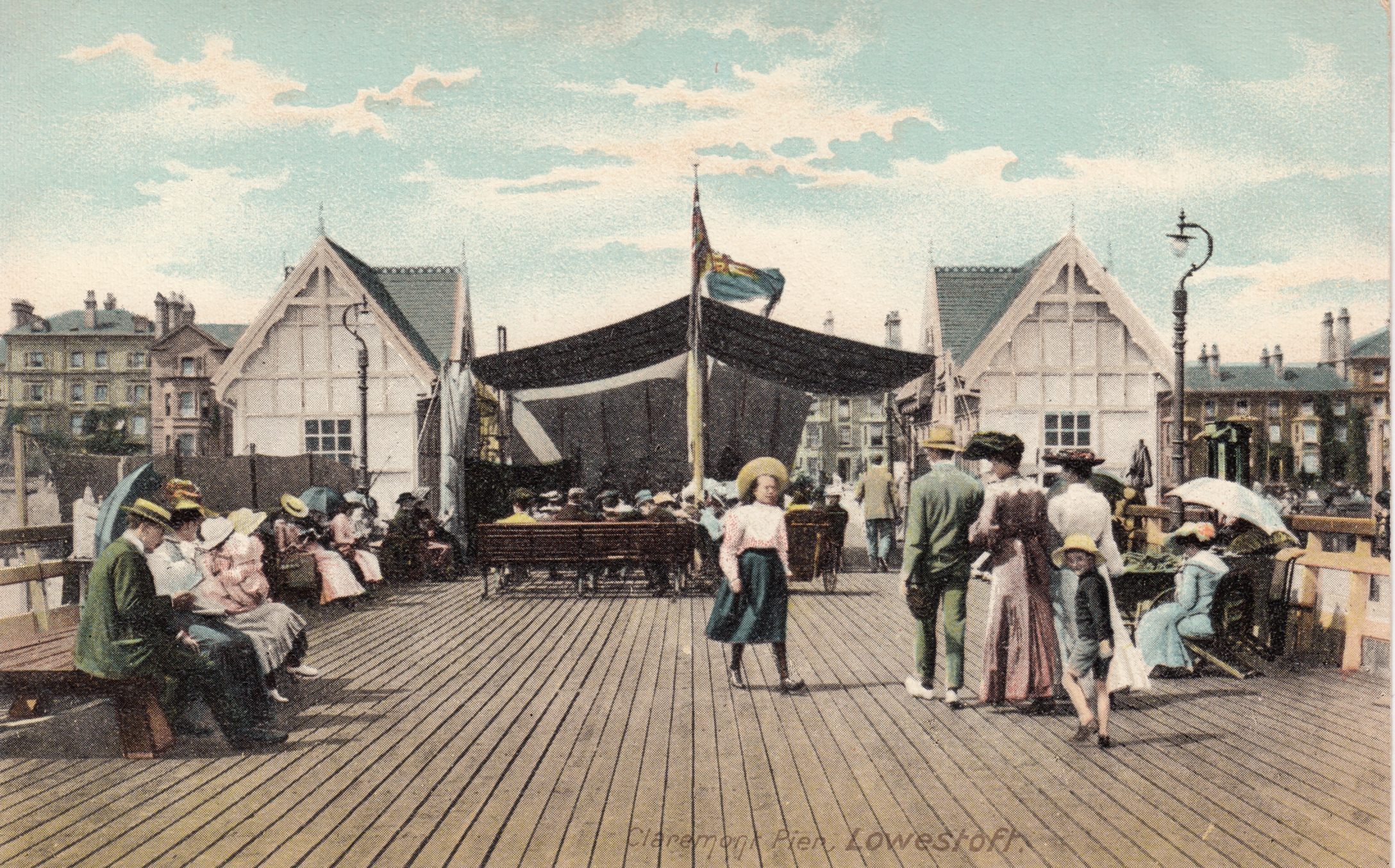
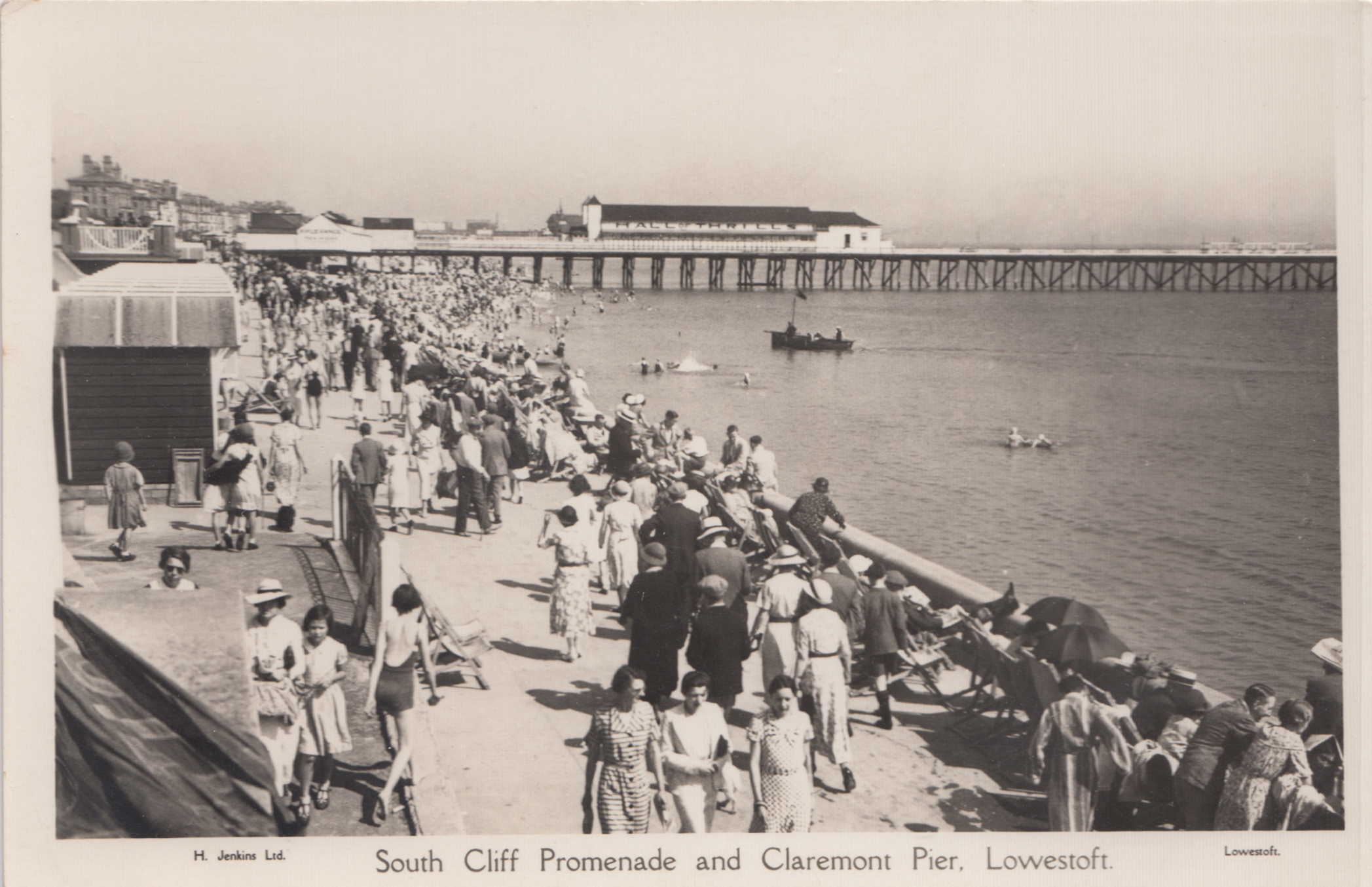
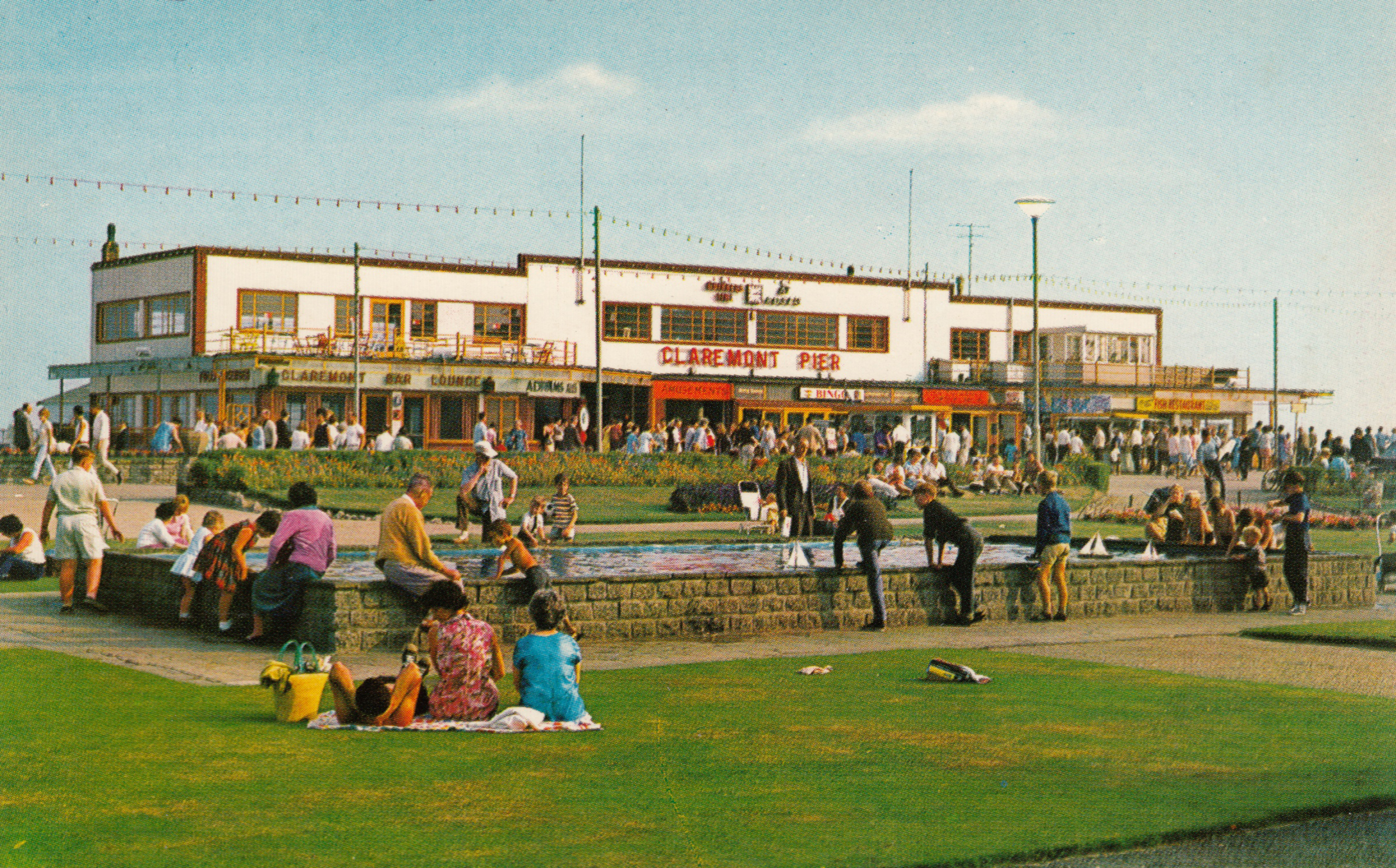
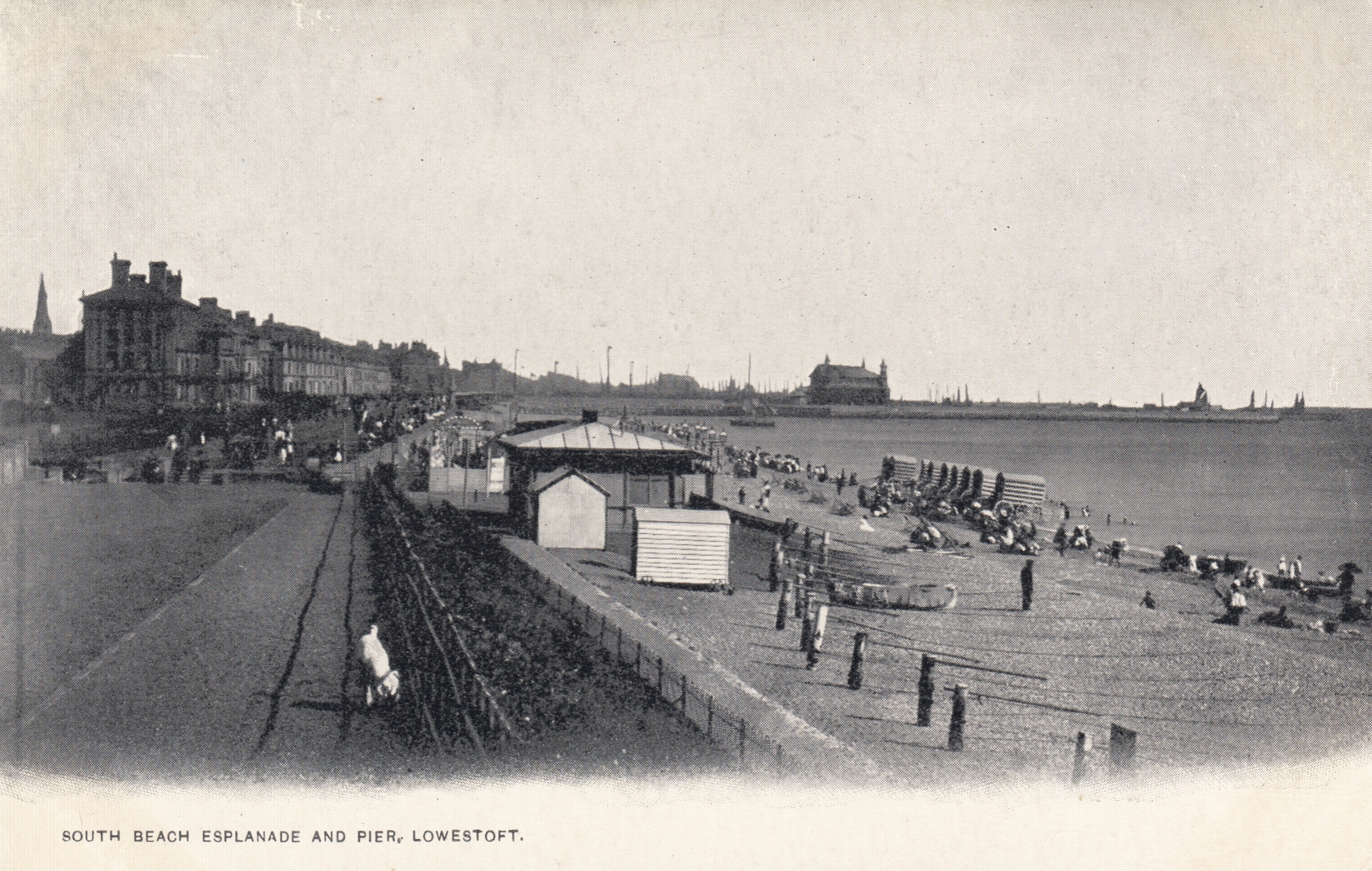
K0334
Before the Claremont Pier was built, 1900.
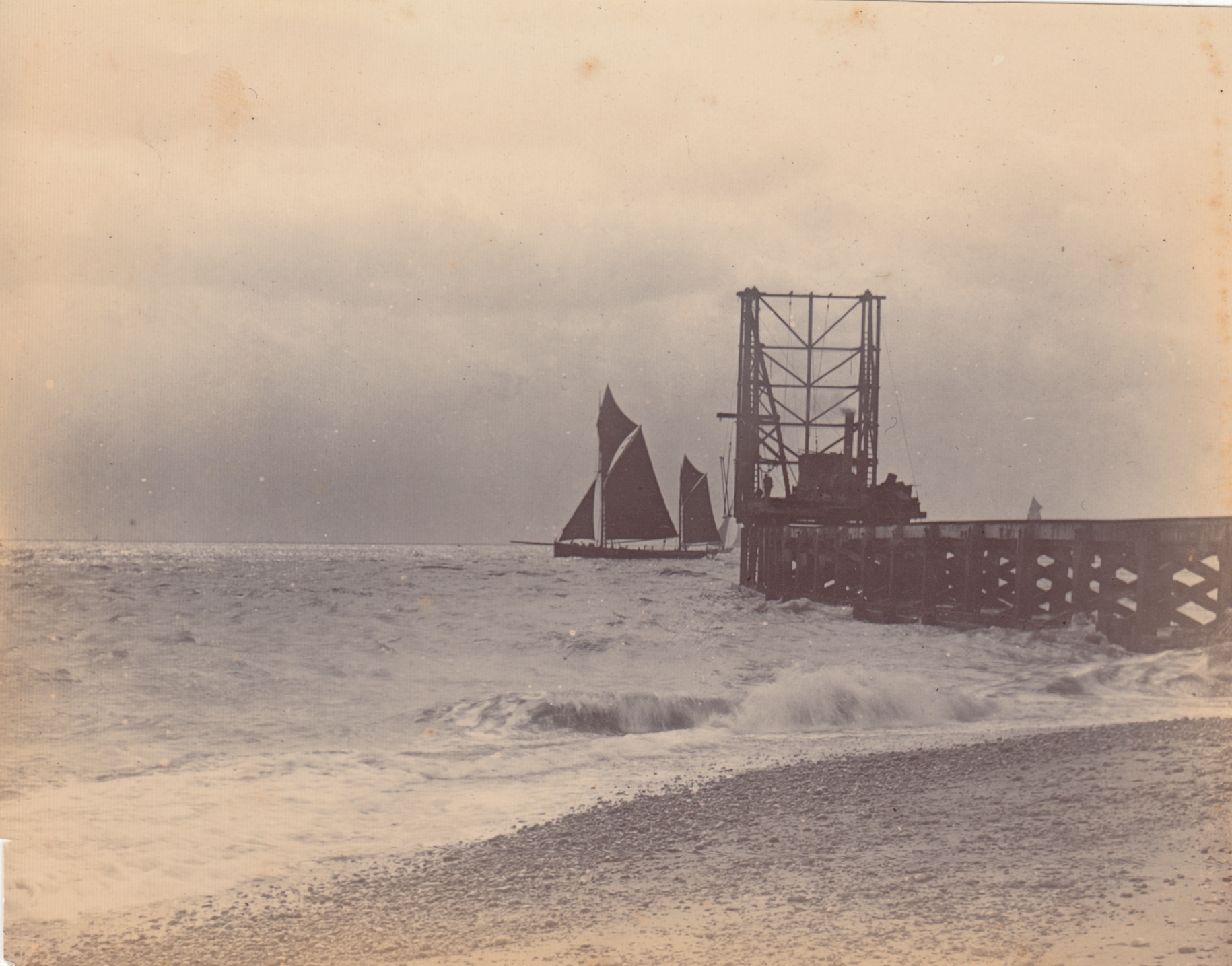
K0522
Pile driving the first piers, 1900.
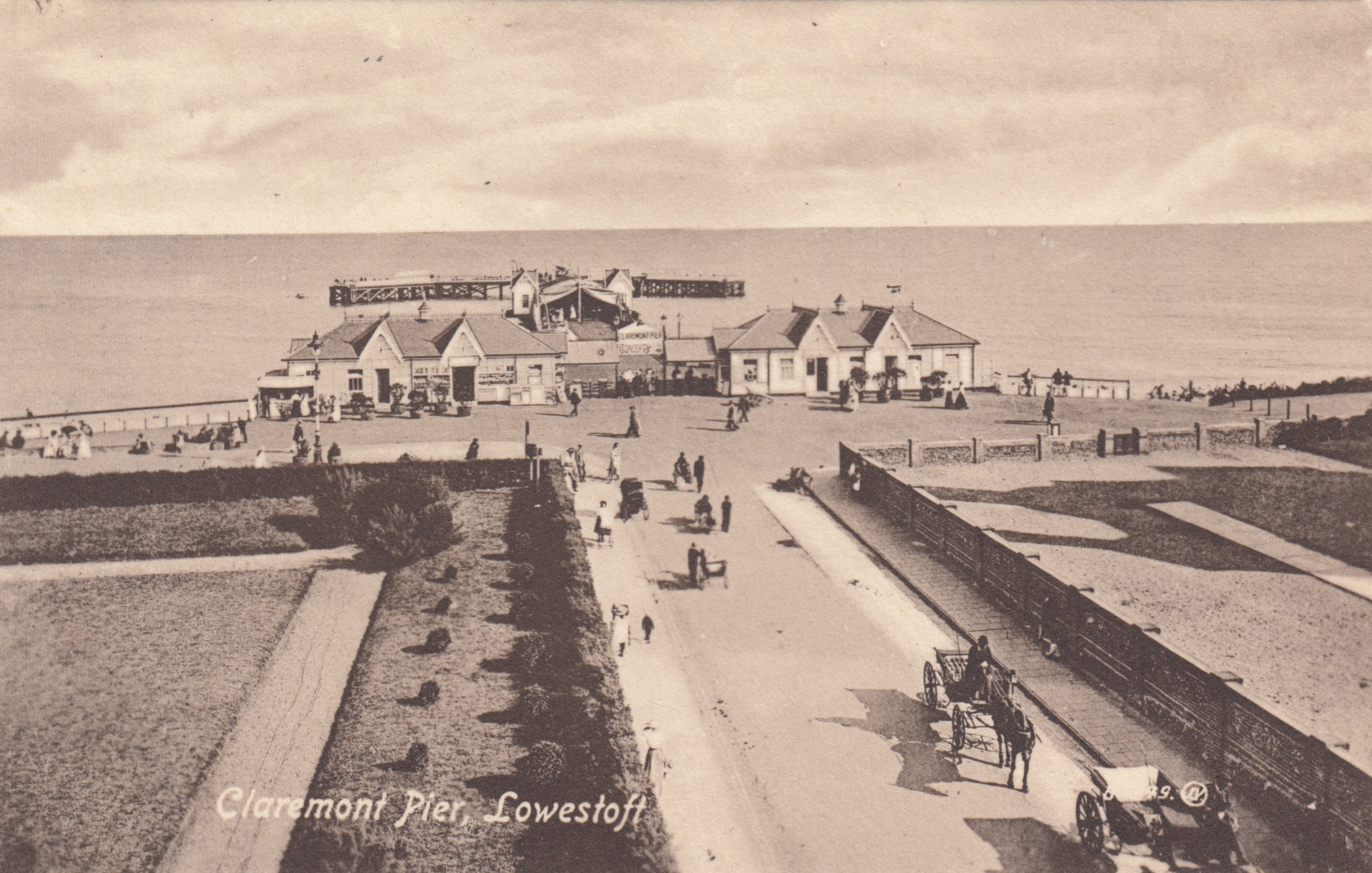
K0292
The finished pier, 1903.
The view north from the new pier, 1903.

Pleasure piers first appeared in England about 1813, but it wasn't until 1903 that Lowestoft's Claremont Pier was built. Pleasure piers were constructed, as the name says, for pleasure. They were built simply to entertain, not as infrastructure for ships or fishing fleets, but for people on holiday to enjoy. Piers were walkways that allowed tourists to walk out over the sea and enjoy the views, all without the inconvenence of sand and salt water on shoes and expensive dresses. Piers often had stages for theaterics and variety shows, amusement halls, stalls for food and souveniers, and plenty of places to sit and admire the view. At the very end of the pier, steamers stopped and took on passengers and the Claremont was no different. For 9d passengers traveled to Southwold and G. Yarmouth for short excursions.
The Coast Development Company started construction on the Claremont in 1902 and finished in 1903. At the start the front of the pier was very small compared to today, with charming rooms up front where a thirsty visitor could buy a cup of tea or tickets to the Belle steamers that regularly traveled up and down the coast.
The Claremont Pier was designed by D. Fox and was originally 181.8 m (596 feet) in length and 10.9 meters wide (36 feet). In 1912, it was extended to a length of 230.3 m (667 feet). Originally it was built of pitch pine, but after the T-head was extended in 1912, piles were replaced with greenheart timber.
Because of the war, in 1939 steamers stopped their services and, unfortunately, never resumed.
During World War II, the Pier was used as an army base until 1948. There was real fear of a Nazi invaders using the pier as a landing platform and in 1940 the Pier was closed and partially destroyed by the Royal Engineers, who blasted a hole in it. After the threat of invasion passed, the hole was coverd with a Bailey Bridge.
You can clearly see the destroyed pier from this view.

After the war, life was hard for seaside towns and Lowestoft had quite a bit of rebuilding to do, and the Claremont was neglected. Even the Lowestoft Town Council wouldn't put up the £4,000 price to buy it. In 1948 it was purchased by George Studd, an actor, and he worked to make it attractive again so tourists would come back.
In 1950, the frontage had a reinforced concreate platform built and a Pavilion was erected. And, I'm sorry to say, the modernization craze that swept Lowestoft in the 1960's and 70's wasn't kind to the Pier. Goodness was it ugly!
Despite the repairs, in 1962 a storm washed a section of it away, reducing its length to 218 meters. It is the nature of piers to be constantly battling the elements and fighting the sea. Since the 1980's, the Scott family have worked hard to peel off the worst of the Swinging Sixties and rebuilt the Claremont's facade to something much less garish and that is more in keeping with its heritage.
The Scotts tried for years to get government grants that would allow much needed maintenance and construction needed to restore the Pier to its full length, where it would certainly be a grand asset to the town and a much more important tourist draw. They were unsuccessful and in 2019 the pier went into voluntary liquidation, where in July of 2020 it was sold to Edward and Charmaine Mayne, their eldest child Victoria Manning and her husband Michael Manning, son Ernie Mayne and daughter Charmaine Llewellyn and her husband Ben Llewellyn. As we move to a new future, the Pier stays in the hands of a family.
There are 99 piers left in the UK in various states of repair, and the piers that have had investment in them have paid pack the money to their towns many times over. I wish the new owners the very best in their endeavours. As you can see, at one time the Claremont was simply gorgeous and still is much loved. It would be brilliant to see it fully restored to its former glory.
The Scotts tried for years to get government grants that would allow much needed maintenance and construction needed to restore the Pier to its full length, where it would certainly be a grand asset to the town and a much more important tourist draw. They were unsuccessful and in 2019 the pier went into voluntary liquidation, where in July of 2020 it was sold to Edward and Charmaine Mayne, their eldest child Victoria Manning and her husband Michael Manning, son Ernie Mayne and daughter Charmaine Llewellyn and her husband Ben Llewellyn. As we move to a new future, the Pier stays in the hands of a family.
There are 99 piers left in the UK in various states of repair, and the piers that have had investment in them have paid pack the money to their towns many times over. I wish the new owners the very best in their endeavours. As you can see, at one time the Claremont was simply gorgeous and still is much loved. It would be brilliant to see it fully restored to its former glory.
Do you have Lowestoft-interest photos to add to the database or want to contribute an article? Or do you have a correction or comment? More information about adding to the site is here.
Events, clubs and Lowestoft news are updated here. Do you have an event or club you want posted? Let us know!
Find out what's new on the site. New images and commentary are uploaded and updated daily.